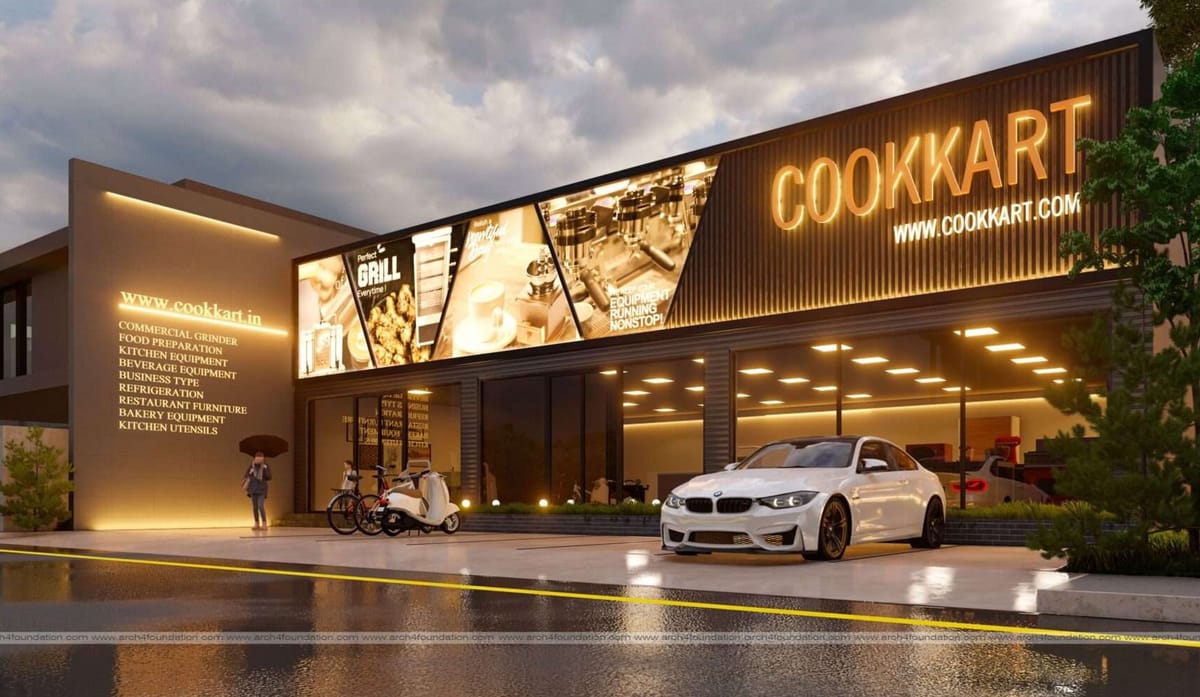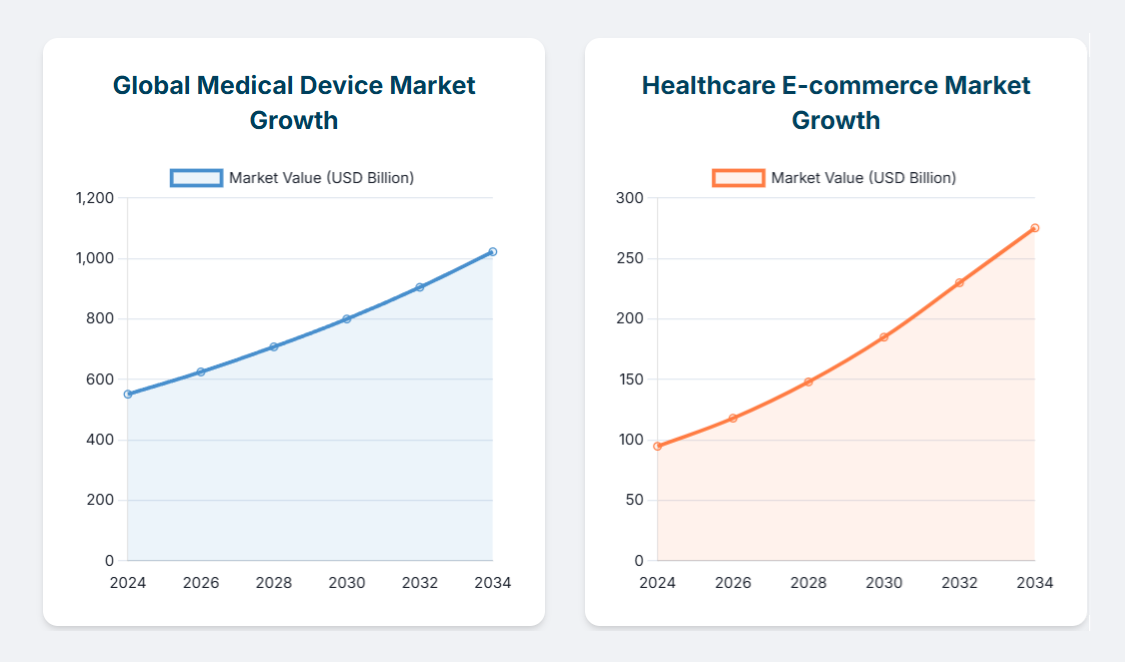The Power of On-Demand Inventory Management - Cookkart.

An E-commerce Success Story with Zero Inventory Cost
Cookkart, an e-commerce platform specializing in commercial food machines, presents a compelling case study in strategic inventory management. In just three years, Cookkart scaled from an initial investment of INR 0 to a revenue exceeding INR 10,000,000, achieving this remarkable growth without incurring any inventory costs. This feat was accomplished by meticulously implementing and refining an on-demand inventory model, transforming a traditional capital-intensive business into a lean, highly scalable operation.
Cookkart: The Business Context
Cookkart operates in the specialized niche of commercial food machinery. Their product catalog includes a wide range of equipment essential for restaurants, cafes, hotels, and catering businesses – from industrial blenders and ovens to deep fryers and refrigeration units. This market is characterized by:
- High Unit Value: Individual machines are often expensive, requiring significant capital investment.
- Bulkiness: Products are large and require considerable storage space.
- Varied Demand: Demand can fluctuate based on new business openings, expansions, or equipment breakdowns.
- Technical Nature: Products often require specific handling and installation.
At its inception, Cookkart faced the typical challenges of a bootstrapped startup: limited capital, a need to offer a broad product range to attract customers, and the inherent difficulties of managing large, expensive inventory.
The Problem: Traditional Inventory Challenges for Commercial Machinery
For a business like Cookkart operating with a traditional inventory model, several significant hurdles would have stifled growth:
- High Capital Investment: Procuring commercial food machines upfront would tie up vast amounts of capital, making scaling difficult and increasing financial risk.
- Warehousing Costs: Storing bulky and heavy machinery requires large, specialized warehouses, incurring substantial rental, maintenance, and utility expenses.
- Risk of Obsolescence and Damage: Equipment can become outdated, suffer damage during storage, or experience depreciation, leading to financial losses.
- Demand Forecasting Difficulties: Predicting exact demand for specific, high-value machines is challenging. Overstocking leads to carrying costs, while understocking leads to missed sales.
- Slow Cash Flow: Capital is locked in inventory for extended periods, negatively impacting liquidity and the ability to reinvest in growth.
These challenges collectively presented a formidable barrier to entry and growth for a new e-commerce player like Cookkart, especially one starting with zero capital.
The Solution: On-Demand Inventory Management
Cookkart's breakthrough came from its decision to completely forgo traditional inventory holding in favor of an on-demand model. In this framework, Cookkart acted purely as a digital storefront and intermediary, facilitating transactions between customers and manufacturers/distributors. The core principle was simple: no stock held by Cookkart; direct-to-customer shipping from suppliers upon order confirmation.
This model was built upon several key pillars:
1. Robust Supplier Network Development
The cornerstone of Cookkart's strategy was establishing strong, reliable partnerships with a diverse network of commercial food machine manufacturers and authorized distributors. This involved:
- Vetting: Rigorous selection of suppliers based on product quality, reliability, manufacturing capacity, and willingness to participate in a drop-shipping model.
- Negotiation: Securing favorable terms, including competitive pricing, efficient order processing, and clear agreements on fulfillment responsibilities.
- Relationship Building: Fostering trust and open communication to ensure smooth operations and quick resolution of issues.
2. Drop-Shipping Model
Cookkart adopted a pure drop-shipping operational flow:
- Customer Places Order: A customer visits Cookkart's e-commerce website and places an order for a specific commercial food machine.
- Order Confirmation & Payment: Cookkart processes the payment securely.
- Order Forwarding: The order details are immediately forwarded to the relevant supplier in their network.
- Supplier Fulfillment: The supplier directly ships the product from their warehouse to the customer.
- Tracking & Customer Service: Cookkart maintains oversight, providing tracking information to the customer and handling any post-purchase inquiries or issues.
3. Technology Integration
Cookkart's e-commerce platform was designed to seamlessly support the on-demand model:
- Real-time Stock Checks: While not always "real-time" in the purest sense (especially with smaller suppliers), the system facilitated frequent updates on supplier stock levels, enabling Cookkart to display accurate availability on their website.
- Automated Order Routing: Orders were automatically routed to the correct supplier based on product mapping.
- Communication Channels: Integrated tools for rapid communication between Cookkart, customers, and suppliers.
- Payment Gateway: Secure and efficient payment processing was crucial, as funds needed to be collected before triggering supplier fulfillment.
4. Quality Control (Supplier Side)
Without physically handling products, Cookkart relied heavily on:
- Supplier Vetting: Ensuring suppliers had robust internal quality control processes.
- Manufacturer Warranties: Relying on standard manufacturer warranties to cover defects.
- Clear Return Policies: Establishing unambiguous return and refund policies with suppliers to manage customer issues effectively.
5. Logistics & Fulfillment (Supplier Responsibility)
Cookkart offloaded all logistics – warehousing, packaging, and shipping – to its supplier network. This was a critical factor in maintaining zero inventory costs and lean operations.
Implementation and Challenges
Implementing this model wasn't without its challenges:
- Initial Supplier Buy-in: Convincing manufacturers and distributors to adapt to a drop-shipping model, especially with high-value items, required strong negotiation and trust-building.
- Ensuring Timely Delivery: Dependence on third-party logistics meant Cookkart had to carefully monitor supplier performance to meet customer expectations. Delays from suppliers could directly impact Cookkart's reputation.
- Handling Returns/Damages: When products are shipped directly from suppliers, managing returns and damaged goods becomes more complex. Cookkart had to establish clear protocols and strong relationships to facilitate smooth reverse logistics.
- Maintaining Customer Satisfaction: The absence of physical inventory meant Cookkart had to excel in communication, setting realistic expectations, and providing proactive customer support to bridge any gaps in the physical delivery process.
- Product Knowledge: While not physically handling products, Cookkart's sales and customer service teams needed extensive product knowledge to advise customers effectively.
Results and Impact: The INR 0 to INR 10,000,000 Story
The on-demand inventory model proved to be the ultimate growth hack for Cookkart, enabling its phenomenal rise:
- Zero Inventory Cost: This was the most direct and impactful financial benefit. By eliminating the need to purchase and hold stock, Cookkart saved millions in capital expenditure and carrying costs. This allowed the founders to start with virtually no upfront capital for inventory.
- Rapid Scalability: The model allowed Cookkart to scale operations rapidly without being constrained by warehousing capacity or capital for inventory. As demand grew, they could simply expand their supplier network or increase order volume with existing partners.
- Improved Cash Flow: Cash flow was significantly optimized. Cookkart collected payment from customers first, then paid suppliers. This "positive cash cycle" meant capital was never tied up in idle inventory, enabling reinvestment into marketing, technology, and team expansion.
- Wider Product Range: Cookkart could offer an extensive catalog of commercial food machines, often featuring products that would be impossible to stock physically due to their size, cost, or specialized nature. This broad selection was a significant competitive advantage.
- Reduced Risk: The business minimized risks associated with inventory, such as obsolescence, spoilage, theft, and damage.
- Financial Performance: The trajectory from INR 0 to over INR 10,000,000 in revenue within three years is a direct testament to the financial viability and efficiency of this model when applied effectively. The high revenue with negligible inventory-related overheads translated into healthy profit margins.
Key Success Factors for Cookkart
Cookkart's success was not just about adopting a model, but about executing it flawlessly:
- Strategic Supplier Partnerships: The ability to identify, onboard, and manage reliable suppliers was paramount. Trust and clear communication channels were critical.
- Robust E-commerce Platform: A well-designed, user-friendly, and efficient e-commerce site facilitated customer orders and automated much of the order forwarding process.
- Customer-Centric Approach: Despite not physically handling products, Cookkart maintained a strong focus on customer service, proactive communication, and efficient problem resolution, building trust and repeat business.
- Efficient Communication & Problem-Solving: Quick and effective communication between Cookkart, customers, and suppliers was essential for resolving any issues related to orders, delivery, or product quality.
- Market Niche Fit: The high-value, specialized nature of commercial food machines made the on-demand model particularly suitable, as the costs of traditional inventory management would be prohibitive.
Lessons Learned & Applicability to Other Businesses
Cookkart's journey offers valuable insights for businesses considering an on-demand inventory model:
- Suitability: This model is most effective for businesses dealing with high-value, bulky, specialized, or rapidly changing products where holding inventory is costly or risky. It's less ideal for fast-moving consumer goods with thin margins.
- Prerequisites for Success:
- Strong Supplier Relationships: This cannot be overstressed.
- Technological Infrastructure: An efficient e-commerce platform and order management system are vital.
- Excellent Customer Service: Proactive communication and efficient problem-solving are crucial to compensate for the lack of direct control over fulfillment.
- Clear Agreements: Formal agreements with suppliers regarding pricing, fulfillment times, returns, and quality standards are essential.
- Potential Pitfalls to Avoid:
- Poor Supplier Selection: Unreliable suppliers can quickly damage reputation.
- Lack of Communication: Miscommunication can lead to delays and customer dissatisfaction.
- Inadequate Customer Support: Customers need reassurance and timely updates.
Conclusion
Cookkart's ascent from an INR 0 starting point to a multi-million rupee enterprise in three years, all while maintaining zero inventory costs, is a powerful testament to the strategic implementation of on-demand inventory management. By leveraging technology, building robust supplier networks, and focusing on seamless customer experience, Cookkart effectively circumvented the traditional capital constraints of its industry. Their success story underscores the immense potential of lean operational models to drive rapid growth and achieve significant financial milestones, even in capital-intensive sectors.

